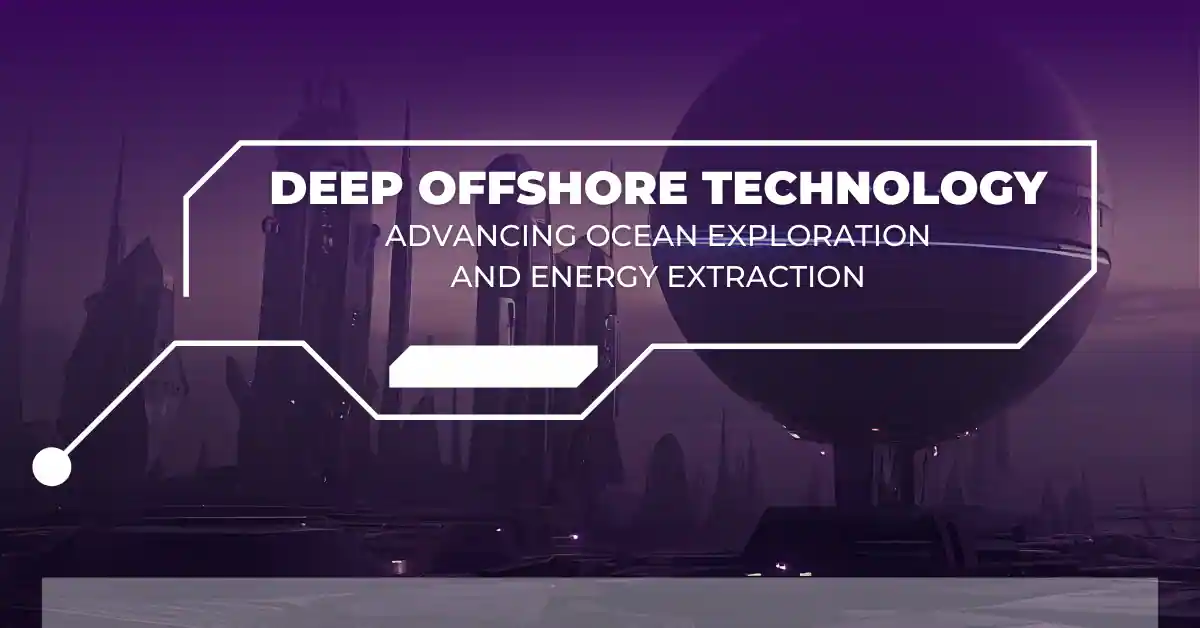Deep offshore technology is transforming how we explore and extract resources from the depths of the ocean. By allowing access to resources far below the ocean’s surface, this technology is essential for the oil and gas industry, opening doors to previously unreachable reserves.
Table of Contents
ToggleHistory and Evolution of Offshore Drilling
The history of offshore drilling is rich and spans several decades, starting in shallow waters and advancing with technology to depths over 3,000 meters. From the earliest wells drilled along coastal areas to today’s sophisticated deep-water platforms, offshore drilling has become a central element in global energy production.
Types of Deep Offshore Technology
Various specialized technologies have been developed to ensure efficient and safe offshore exploration and extraction in extreme underwater conditions.
Subsea Production Systems
Subsea production systems are critical in deep offshore technology, enabling oil and gas extraction from deep-water fields. These systems include subsea trees that control the flow and subsea processing units to minimize the need for large surface structures.
Floating Production Systems
Floating production systems, such as Floating Production Storage and Offloading (FPSO) units, function as mobile platforms that can extract, process, and store oil. These systems are ideal for fields where constructing permanent structures is unfeasible.
Advances in ROVs (Remotely Operated Vehicles)
Remotely Operated Vehicles (ROVs) are essential in deep offshore operations, especially in harsh environments where human access is limited. ROVs are used for inspections, repairs, and data collection in deep-sea conditions.
AUVs (Autonomous Underwater Vehicles) in Offshore Operations
Autonomous Underwater Vehicles (AUVs) navigate and operate independently, collecting data for seafloor mapping and environmental monitoring. Unlike ROVs, they don’t require real-time control, making them ideal for long-range missions.
Wellhead and Drilling Technologies
Wellhead and drilling technologies are central to deep offshore projects, managing the pressure and flow of resources extracted. Modern wellheads and advanced drilling methods allow for safer and more efficient extraction in extreme deep-water environments.
Challenges of Deep Offshore Technology
Deep offshore technology faces numerous challenges. Environmental concerns, high operational costs, and technical difficulties are all factors that demand innovative solutions.
Environmental Impact and Sustainability
Deep offshore drilling can have significant effects on marine life, including oil spills, noise pollution, and habitat disruption. Efforts are underway to make these operations more sustainable by implementing better containment methods and emission-reduction technologies.
Safety in Deep Offshore Drilling
Safety is crucial in deep offshore operations. High pressures, remote locations, and unpredictable conditions make safety protocols, emergency response, and regular inspections indispensable to protecting workers and the environment.
Future Trends in Deep Offshore Technology
Several emerging technologies are set to reshape the future of deep offshore operations. Innovations in AI, robotics, and advanced mapping are poised to improve efficiency, safety, and environmental responsibility.
The Role of Robotics and AI in Offshore Technology
Robotics and AI are increasingly important in offshore technology, especially for monitoring and predictive maintenance. Robotics improve precision in underwater operations, reducing the need for human intervention and increasing safety.
Cost Management in Deep Offshore Projects
Managing costs in deep offshore projects is vital due to the high expense of technology, specialized labor, and safety measures. By using predictive maintenance, resource allocation strategies, and advanced monitoring, operators can minimize costs while maximizing efficiency.
Conclusion
Deep offshore technology has revolutionized energy extraction, providing access to vast resources within our oceans. Although there are challenges, the continued advancements in safety, sustainability, and efficiency suggest a bright future for deep offshore exploration.
FAQs
- What is deep offshore technology?
Deep offshore technology encompasses tools and systems used to explore and extract resources from deep ocean environments. - How does deep offshore technology impact the environment?
Deep offshore activities can harm marine ecosystems, but innovations in sustainable practices are helping reduce negative impacts. - What are some types of deep it?
Key technologies include subsea production systems, floating production units, ROVs, and AUVs, each designed to meet specific offshore needs. - What role does robotics play in it?
Robotics enhance accuracy and efficiency in underwater operations, reducing risks and improving safety. - What are future trends in it?
AI, enhanced underwater drones, and new mapping technologies are leading advancements in the future of offshore exploration.





